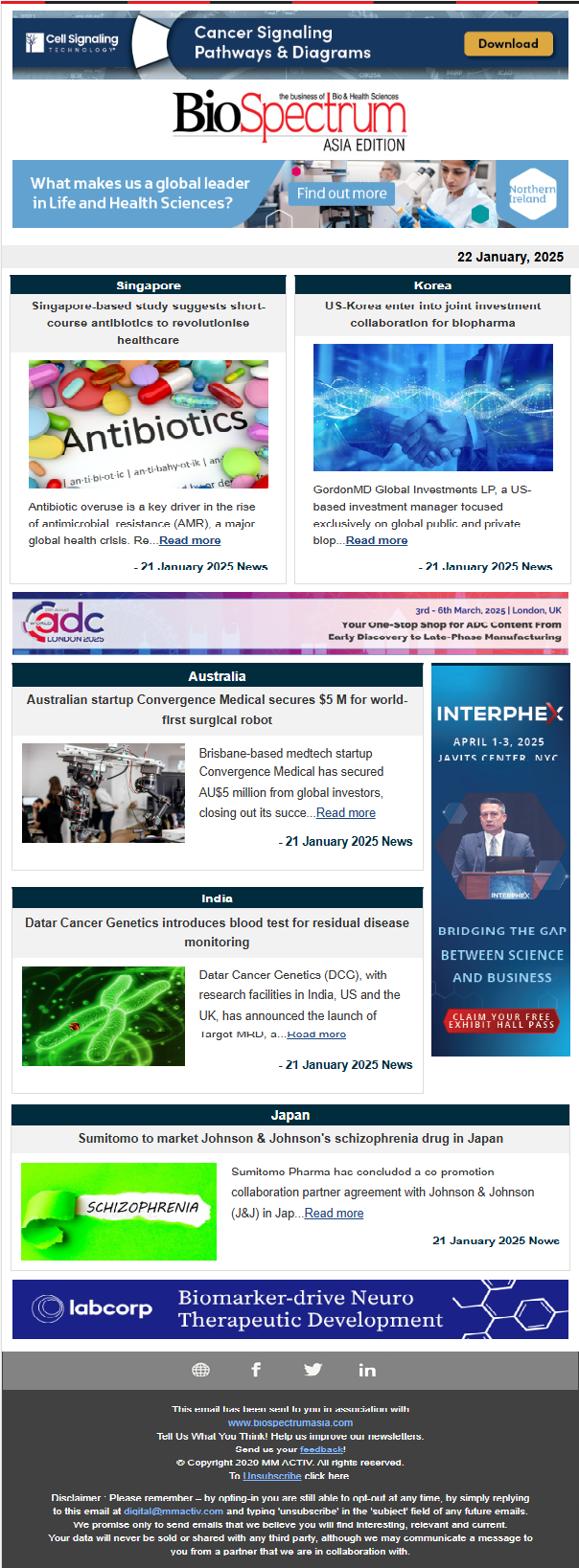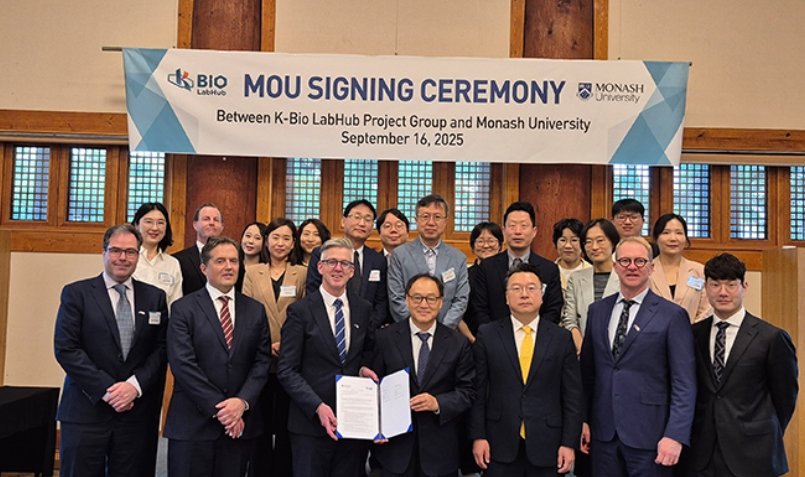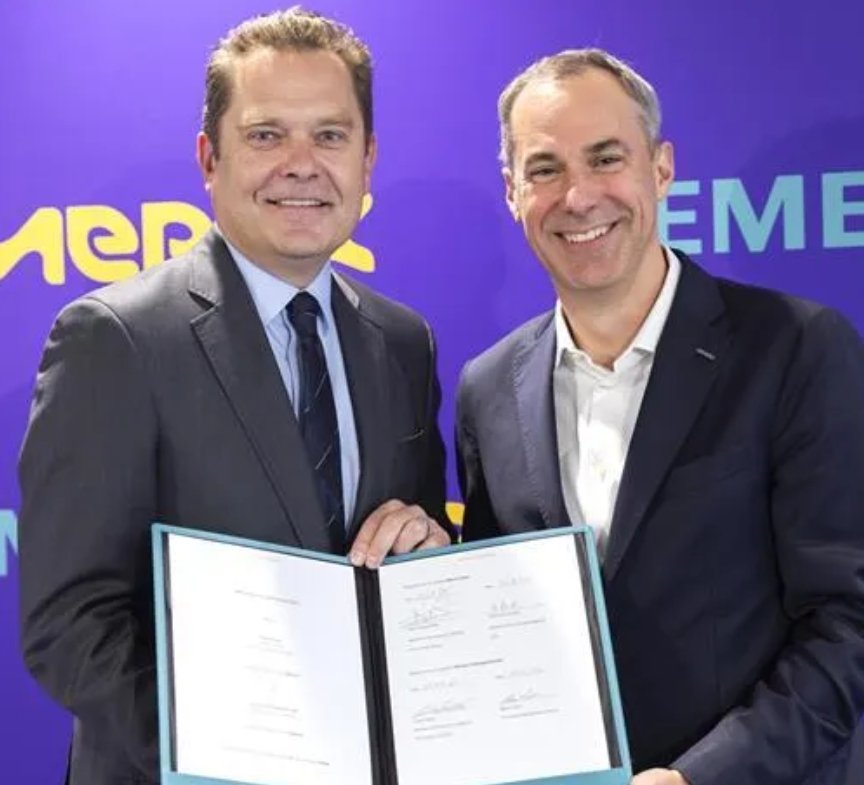
Mr Kevin Cheong, director, Clinical Operations, Asia, Almac
The number of biopharmaceutical clinical trials either being conducted or organized in the Asia Pacific region is increasing every year. In 2014, 23 per cent of clinical trials were conducted in Asia Pacific, and that percentage is destined to climb. The region offers a multitude of treatment-naïve patients - India and China's populations alone are sufficient to sustain virtually any trial, and overall trial costs are generally lower than in other regions.
A number of challenges can arise when conducting clinical trials in the Asia Pacific region, with little margin for error. As in other regions, supply chain managers must cope with complex protocols, short timelines for patient enrolment, strict regulations that vary across countries and cross-vendor alignment. In addition, they must contend with multiple languages, the need for round-the-clock support, a lack of trend data on which to forecast demand, and logistical challenges in transporting and distributing investigational products.
To achieve efficiencies, pharmaceutical companies are turning to advanced technology, improved processes and flexible outsourcing models.
Conducting trials in APAC - A New Outsourcing Model
To manage and support the clinical supply chain, pharmaceutical companies have long relied on multiple outsourcing partners - each offering expertise in one aspect of the process or one local market. However, that practice tends to replace one type of complexity with another. In such situations, trial managers are forced to become ringleaders, devoting considerable time to developing separate service agreements and financial terms with each contracting party, facilitating communication between partners and ensuring smooth hand-offs between entities.
Recently, leading companies have realised that in order to meet their goals for global studies, they need a different level of support from their supply chain partners. This is particularly the case in Asia Pacific, where pharmaceutical companies may lack the requisite experience to operate effectively across multiple countries.
Achieving such consistency, insight and agility dictates reliance on a single trusted partner that can offer a holistic solution across the entire supply chain, and that has the technology to integrate information and processes seamlessly from one end of the process to the other. When a company's outsourcing partner has sufficient breadth of expertise and the right technology framework, pharmaceutical companies can realise greater efficiencies, reduced costs and improved trial outcomes.
Forecasting Drug Supply
Developing and maintaining an accurate forecast of product demand over the course of a clinical trial is essential to being able to satisfy the demand cost effectively. The first step is to create a data collection plan that outlines which study variables will drive product demand. A baseline forecast is thus established to inform manufacturing and distribution plans.
In theory, the forecasting process works the same in Asia Pacific countries as elsewhere. However, the difficulty is that there is less historical data on which to base demand assumptions than in markets which have a long history of running clinical trials. The risk is that the initial forecast could be wildly off - causing a company to either overproduce a product or fall short, jeopardising patient safety and study integrity.
As such, it may be necessary to create forecasts for different scenarios and to develop contingency plans. Then, over the course of the study, with the right interactive response technology (IRT) in place, the baseline forecast can be continuously refreshed based upon how demand actually unfolds. With real-time updates of what is happening throughout the supply chain, supply managers can be alerted to variances from the forecast. They can optimise production planning and shipping/distribution, avoiding stockouts and emergency planning, as well as excessive stockpiling that incur storage costs and waste.
Distributing Supplies
When distribution is optimised during a clinical trial, just enough investigational product is on hand at sites, having arrived in an acceptable condition and with minimal cost. Achieving this ideal requires meticulous planning that begins when the protocol is still under development. Creating a distribution strategy entails identifying the study milestones (such as first patient in) that will affect product demand, and understanding all of the regulatory and logistical details (ranging from sourcing comparator products to transportation and customs lead times) that will impact delivery. With that information in hand, it is then possible to perform a thorough risk analysis and design a system that delivers what was agreed upon as optimal, beginning with initial stock levels at each site.
As the trial progresses, the product supply must conform to shifts in demand. When the proper ordering, tracking and information-sharing processes are in place within the IRT, every function along the way can monitor supply and demand, working proactively to forestall potential issues.
Import and Export Regulations
Unlike in the European Union where member countries all subscribe to the same set of import and export regulations, not all countries in Asia Pacific necessarily abide by the same customs requirements. While some countries have well-documented standards, others (such as Vietnam and the Philippines) are still developing their customs regulations, which can add significant delays to the distribution process. Regardless, each nuanced difference must be understood and then accounted for in the supply plan so that investigational products end up where and when they are needed.
Some, but not all, Asia Pacific countries are members of the Pharmaceutical Inspection Co-operation Scheme (PICS), which aims to harmonise inspection methods under Good Manufacturing Practices. A country's membership in PICS has a bearing on how well its customs officials adhere to specific handling requirements for products. In one country, for instance, controlling the temperature of a shipment may simply mean storing it in a particular building; in the absence of specific instructions, the officials will not know to conduct temperature mapping and validation procedures.
Another common issue is that customs officials are frequently rotated into different jobs, leaving staff unfamiliar with the requirements for pharmaceutical products. This adds to the turnaround time and risk of product damage.
Minimising Transport Costs
The cost of shipping products to and from clinical trial sites is estimated to be 60 per cent of the total logistical cost of a clinical trial. Clearly, the physical placement of inventory and the number and mode of product shipments to sites is an important consideration. In some trials, all sites are supplied directly from a central location; in others, fixed central depots supply country-specific depots run by local partners in a 'hub and spoke' fashion.
What will work best in any given study within Asia Pacific depends upon the study design, how widespread the sites are, and which countries are participating in the trial. In most Asia Pacific situations, the hub and spoke system works best, given the amount of territory to be covered. It is possible, for example, to ship a product very economically from a central hub in Singapore to a number of Asia Pacific countries, all within a six-hour radius, by air.
Temperature Stability
Most of the Asia Pacific region enjoys year round summer temperatures, with Australia, Japan, China and South Korea being exceptions. As trials in many emerging economies will involve delivering products to remote regions where it is difficult to maintain a cold chain, these conditions must be considered when selecting shipping packs. If the product starts in a winter climate but is transported to a summer climate, the winter pack-out kit will start to lose energy when it is being staged for final delivery. Similarly, if a product starts in a summer climate and is shipped to a winter climate, the summer pack-out kit could permit cold shock. These climatic changes have been so problematic that some manufacturers elect to use active, rather than passive, shipper boxes, despite the five-fold cost increase.
To manage costs and ensure integrity of the investigational product, a robust process must be agreed upon between the partner and courier. In-country depots reduce transit time by removing the cross border challenges and mitigate against extreme temperature fluctuations. This also allows the use of passive shippers between depots and sites.
Return and Destruction Regulations
Just as import regulations are not harmonised across the Asia Pacific region, standards on the destruction or return of unused products differ by country. Some countries in the region require unused or expired products to be returned to the source country, which incurs still more shipping costs; others require the product to be destroyed where it is currently held. Reconciling the amount of product shipped against what was used by patients and what went unused becomes challenging under these circumstances. Warehouses must be given specific standard operating procedures (SOPs) governing how packs are counted and handled.
Technological Integration
Co-ordinating all of the complex activities that go into distributing products to trial sites and mitigating the associated risks calls for a closed-loop technology solution that gives all functions visibility to the entire supply chain. This is a single system that supports forecasting and all the downstream processes of manufacturing, packaging and labelling, drug ordering, inventory management and product distribution with integrated information throughout the life of the study. As the trial progresses, data are gathered from each stage of the process and are used by supply chain managers to consider modifications to all activities upstream. This virtual cycle of information and adjustments allows companies to optimise their approach to meeting actual demand for the investigational product - all in real-time. Adopting a closed-loop solution is perhaps the most significant step a company can take in improving supply efficiencies. The right system will remove information gaps that contribute to delays and added expenses.
When and How to Outsource
Companies are motivated to outsource their supply chain management to improve timelines, reduce costs, tap specialised skillsets and knowledge, and access local facilities and infrastructures in study countries.
To meet these objectives, the most cost-effective trend is towards outsourcing the management of the entire supply chain to one vendor that has end-to-end capabilities, including the use of partners that can support any or all stages of the drug inventory and distribution process in Asia Pacific. Utilizing this strategy will help pharmaceutical companies better navigate the complexity of clinical trials in Asia Pacific while tapping into the robust data and findings these trials produce.




